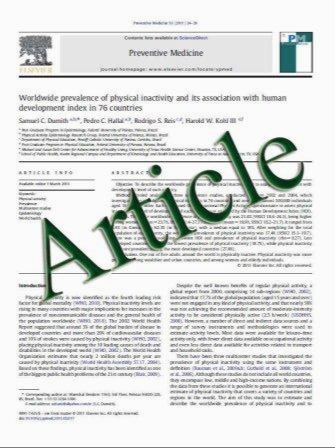Is anemia at admission related to short-term outcomes of elderly hip fracture patients?
- نوع فایل : کتاب
- زبان : انگلیسی
- مؤلف : Emilija Dubljanin-Raspopoviو1,2*, Ljiljana Markoviو-Deniو3, Dejan Nikoliو4, Goran Tuliو2,5, Marko Kadija2,5, Marko Bumbaڑireviو2,5
- چاپ و سال / کشور: 2011
Description
Hip fracture in elderly people is associated with high morbidity and mortality. Therefore, it is important to identify risk factors that potentially influence outcomes after hip surgery. The main purpose of this study was to evaluate the relationship of anemia at admission and short-term outcomes after hip fracture. We studied 343 community-dwelling patients who underwent surgery for hip fracture from March 2009 to March 2010. Functional mobility at discharge, postoperative complications, hospital length of stay and in-hospital mortality were analyzed in respect to presence and severity of anemia at admission. Anemia (defined as hemoglobin levels < 13.0 g/dl for men and < 12.0g/dl for women) was present in 185 (53.9%) patients, of whom 54 (29.2%) were severely anemic (defined as hemoglobin level 10.0g/dl or below). In multivariate analysis anemia was associated with age, gender (female), type of fracture (intertrochanteric) and American Society of Anesthesiologists (ASA) classification (3 or 4), while severity of anemia was associated with recovery of ambulatory ability at discharge. There was no difference in the incidence of postoperative complication, in-hospital mortality and length of hospital stay between the groups at discharge. Overall anemia at admission is an indicator of poor general health status. Ambulatory recovery in hip fracture patients is independently related to severity of anemia at admission.
Cent. Eur. J. Med. , 6(4) , 2011 , 483-489 Received 9 August 2010; Accepted 21 March 2011


